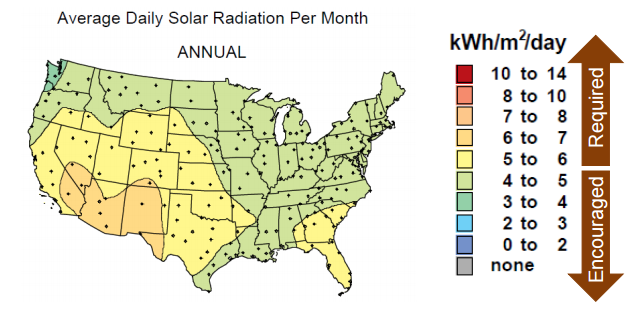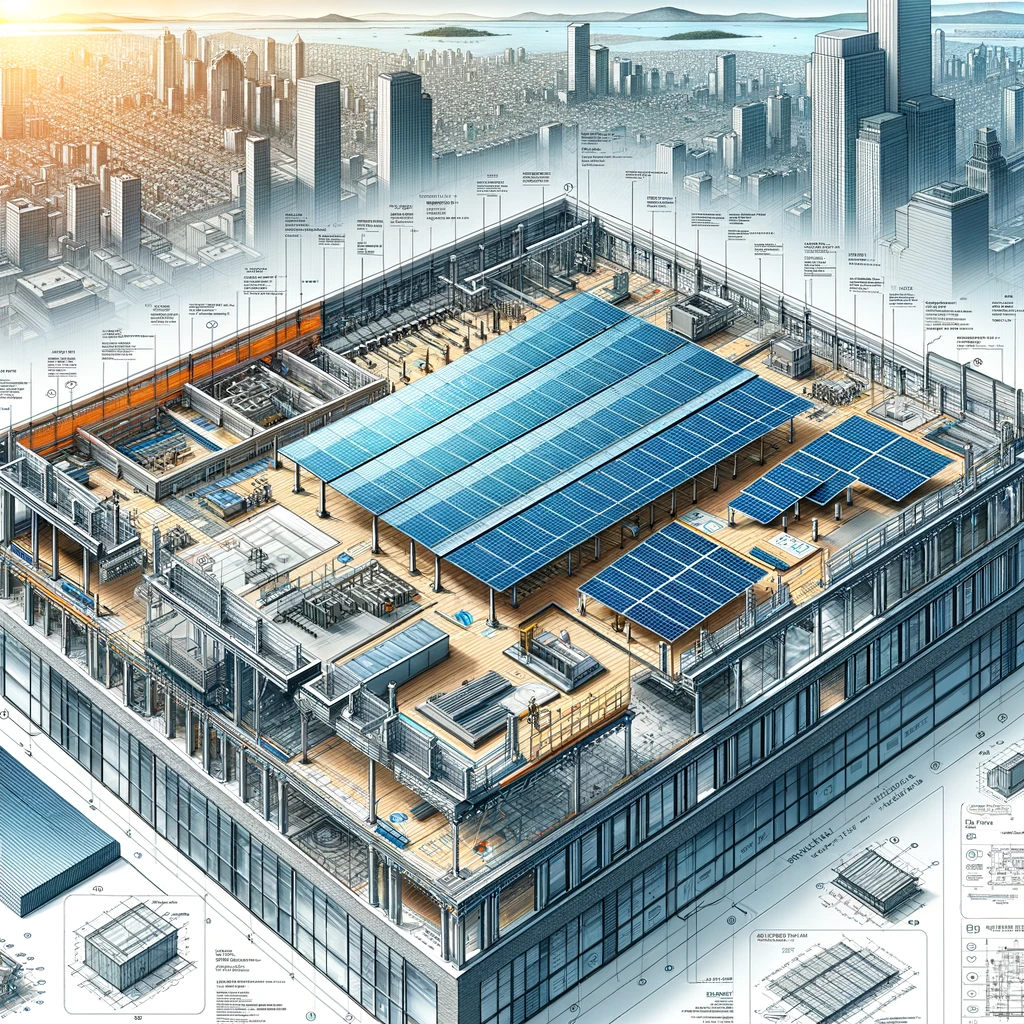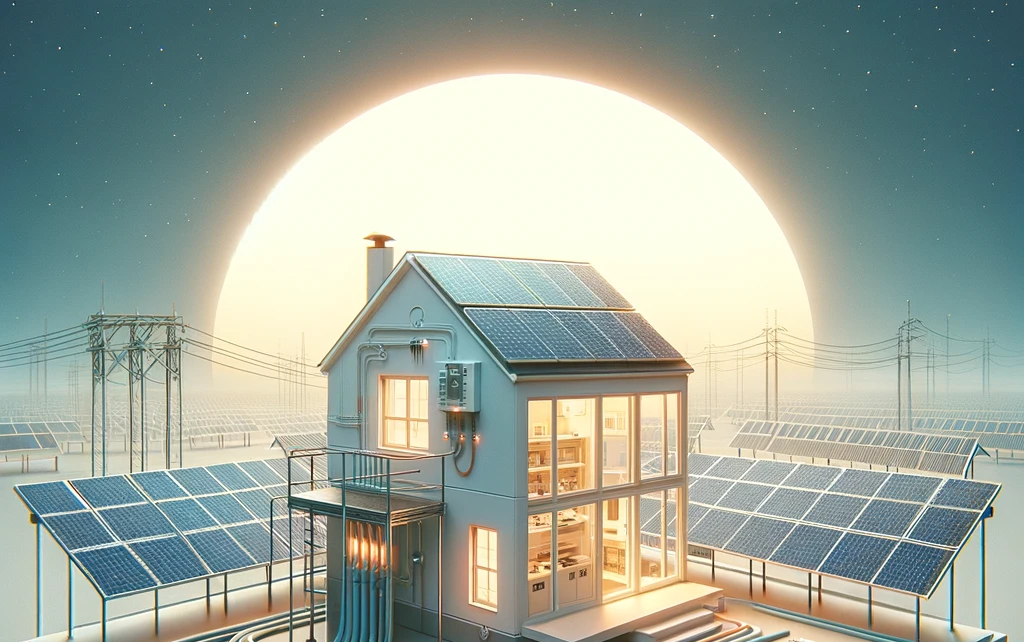Installing photovoltaic (PV) modules on your roof is a significant step toward harnessing solar energy and reducing your environmental footprint. To ensure a successful and efficient installation, it’s crucial to choose the appropriate roof racking and mounting system tailored to your specific PV modules. In this guide, we’ll walk you through the steps to make the right choice.
Scope:
- Install a mounting system for solar thermal or solar photovoltaic panels.
- Consider the roof type (material and slope), weatherproofing, installation convenience, and wind and snow loadings.
- Choose an appropriate racking and mounting system for the type of PV module, and install the system along with needed flashing and seals.
Description:
- Photovoltaics (PV) are becoming more common today on the rooftops of homes to capture and convert solar energy into electricity.
- Solar thermal systems for heating water are installed on the roof in the same way the PV panels are installed.
- Properly choosing a racking and mounting system is crucial for structural support and roof integrity.
Roof Racking and Mounting Systems:
- Various manufacturers offer roof racking and mounting systems with similar basic components.
- Components for PV modules include a two-railed track, flashing for weatherproofing penetrations, and necessary hardware.
- Some systems eliminate the need for rails, simplifying the installation process.
Roof Slope Consideration:
- Consider whether the roof slope is suitable for PV modules or if additional slope needs to be added via the roof mount system.
- Ensure compliance with IRC Section 324 Solar Energy Systems, which specifies firefighter access and structural requirements.
Roof Penetrations, Flashing, and Roof Attachments:
- Roof penetrations are often required for rack mounts, and it’s essential to secure them properly.
- Use quality sealants and flashing to prevent leaks from penetrations.
- Coordinate with roofers to ensure warranty issues are addressed and proper flashing materials are used.
Weatherproofing:
- Weatherproofing is critical for PV anchoring systems to prevent leaks from roof penetrations.
- The IRC requires that roof penetrations for rooftop PV systems be flashed and sealed.
Wind Loads:
- Consider both dead load (weight of the system) and live loads (wind, snow, maintenance).
- Structural engineers should be involved to ensure proper framing and support.
- Design wind loads are defined in ASCE/SEI 7-16.
Installation Quality:
- Proper installation is essential; ensure that structural members are not missed during fastening.
- Bolts should be correctly positioned and tightened as per manufacturer specifications.
- Specify double-nutting of panel clamp bolts and use calibrated torque wrenches.
Coordination with Other Trades:
- Coordinate with roofers, trades requiring roof penetrations, PV installers, landscape designers, painters, and stucco crews for compatibility.
- Ensure proper grounding of the PV panel system.
Specific Roof Types:
- Different roof types (composition shingle, flat, standing seam metal, structural insulated panel) may require specific mounting methods.
- Curb mounts, elevated racks, and clips are used based on roof type.
Low-Profile Mount and Thin Film Solar Panels:
- Consider low-profile mounting systems for a sleek look.
- Thin film solar panels may not require roof anchors or racks.
Choosing the Right Roof Racking and Mounting System for Your PV Modules
Step 1: Identify Your Roofing Material and Slope
The first consideration in selecting a roof-mounted PV anchoring system is understanding your roof. Identify both the type of roofing material that will be installed and the slope of your roof. These two parameters will greatly influence the choice of anchoring system because different systems are designed to accommodate varying roofing materials and slopes.
Step 2: Determine Your PV Module Type
Next, determine the type of PV module you’ll be installing. PV modules come in different forms, such as traditional panels or integrated tiles like PV shingles. Some PV shingles are designed to be installed without the need for additional mounting hardware, simplifying the installation process. In such cases, it’s essential to follow the manufacturer’s installation instructions closely.
Step 3: Choose the Right Anchoring System
Once you’ve identified your roof type (material and slope) and the type of PV module, it’s time to select the mounting system. Here are key considerations when choosing your system:
- Components: Ensure that the chosen system includes all the necessary components for a complete installation. These may include brackets, rails, clamps, and other hardware.
- Efficiency: Consider the efficiency of the installation process. Some systems are designed to streamline the installation, saving you time and labor costs.
- Additional Loads: Account for potential additional loads on the system due to factors like wind and snow. A robust anchoring system should be able to withstand these loads.
- Manufacturer’s Documentation: Always reference the manufacturer’s documentation for the specific product to ensure that the anchoring system is compatible with your chosen PV module.
Step 4: Verify the Installation Quality
After the first row of PV modules has been installed on the anchoring system, it’s crucial to perform a thorough inspection to verify that the installation meets high-quality standards. Implement quality control and quality assurance procedures to ensure that the installation aligns with the design intent. This proactive approach can help prevent future issues related to weather damage or the need for costly rework.
Climate Considerations in PV Installation
When it comes to installing photovoltaic (PV) systems, accounting for local climate conditions is essential. The DOE Zero Energy Ready Home PV-Ready Checklist (Revision 07) mandates specific conditions related to climate. Here’s what you need to know:
- Average Daily Solar Radiation: PV systems are most effective when exposed to ample sunlight. To determine compliance, check if the home’s location, based on the zip code, receives at least 5 kWh/m2/day of average daily solar radiation annually using the PVWatts online tool. This ensures that the system can generate sufficient energy based on local sunlight conditions. Figure 1: Average daily PV radiation per month over the United States
In addition to solar radiation, other climate-related factors must be considered when choosing a racking and mounting system for PV panels:
- Roof Material: The type of roof material can impact the installation method.
- Roof Slope: The slope of the roof affects the angle at which panels are installed.
- Weatherproofing: Proper weatherproofing is crucial to prevent leaks.
- Installation Convenience: Ease of installation should be factored in.
- Wind and Snow Loads: Depending on your location, consider the impact of high winds or heavy snow loads on the system.
For areas prone to hurricanes or strong winds, compliance with local building codes and standards is essential. The International Residential Code (IRC) 2018, Chapter 3, provides guidance on design wind loads and other loading conditions.
PV array installers and designers can use ASCE/SEI 7-16 Minimum Design Loads for Buildings and Other Structures to calculate various loads, including wind, for general structural design. Designing mounting systems for wind uplift is particularly critical in hurricane-prone regions.
Design Guidance for Hurricane-Prone Regions:
- Calculate Wind Loads: Use ASCE 7-16 or local building codes to calculate wind loads on PV arrays. Consider the design criteria in SEAOC PV2-17 as well.
- Mechanically Anchored Systems: In hurricane-prone regions, specify mechanically anchored PV rails or racks instead of ballasted ones.
- VSH-Rated Panels: Specify PV panels with a VSH rating per FM 4478 for added durability.
- Microinverters: Consider using microinverters, especially in areas prone to wind damage. They allow undamaged panels to continue producing power even if one panel is damaged.
- Power Resilience: Configure PV power systems to provide power to the building even when municipal power is down.
For All Regions:
- Uplift Resistance: Specify PV panels and rail/rack systems with sufficient uplift resistance to meet calculated wind loads.
- UL and ICC Listings: Ensure that PV panels and systems have UL 1703 and UL 2703 listings (as applicable) and an ICC AC 428 evaluation report.
- Double-Nutting: Specify double-nutting of panel clamp bolts for added security.
- Calibrated Torque Wrench: Use calibrated torque wrenches to make bolted connections as per the manufacturer’s specifications.
- Roof Drains: Avoid installing PV panels over roof drains and provide walkways for drain maintenance.
- Walkways: Install walkways between rows of PV panels for annual bolted connection checks.
Wind-Borne Debris:
In hurricane-prone regions, it’s advisable to specify solar panels with a damage rating of “VSH” (very severe hail) per FM 4478 to withstand potential wind-borne debris.
For seismic considerations, refer to the Structural Engineers Association of California (SEAOC) report, “Structural Seismic Requirements and Commentary for Rooftop Solar Photovoltaic Arrays” (SEAOC PV1-2012).
Compliance with Energy and Building Codes
In the realm of energy-efficient and sustainable construction, compliance with industry standards and building codes is paramount. Below, we outline key compliance requirements and associated code sections:
ENERGY STAR Single-Family New Homes, Version 3/3.1 (Rev. 11)
- Complete contract documentation is not required by ENERGY STAR HOMES® Version 3/3.1.
DOE Zero Energy Ready Home (Revision 07)
- Exhibit 1, Item 1: Certified under the ENERGY STAR Qualified Homes Program or the ENERGY STAR Multifamily New Construction Program.
- Exhibit 1, Item 7: Provisions of the DOE Zero Energy Ready Home PV-Ready Checklist are Completed.
- For community solar and multifamily buildings, specific provisions may apply.
International Residential Code (IRC) – 2015, 2018, and 2021
- Chapter 9 (Roof Assemblies) and Chapter 23 (Solar Energy Systems) discuss the installation of PV panels and associated details.
- Section R324 addresses solar energy system requirements, with updates in 2018 including structural requirements, roof penetrations, and firefighter access.
- P3103.1.3 allows solar collectors or PV panels above plumbing vents under certain criteria.
Retrofit: 2009, 2012, 2015, 2018, and 2021 IRC
- Section R102.7.1 governs additions, alterations, or repairs, ensuring compliance without requiring unaltered portions of existing buildings to meet new code requirements.
- Appendix J regulates repair, renovation, alteration, and reconstruction of existing buildings.
ICC Evaluation Report AC 428
- This report requires rooftop PV panel systems to be designed for component and cladding pressures per ASCE 7-10, with specific requirements for fasteners and inspections.
National Electric Code (NEC)
- Although the code doesn’t impose specific regulations for roof mounting of PV systems, grounding and electrical requirements are outlined.
Standards
Several associations contribute to roofing and PV installation standards:
- National Roofing Contractors Association (NRCA) provides best practice guidelines for roofing systems, including PV module installation.
- Center for Environmental Innovation in Roofing (CEIR) fosters communication between roofing and PV industries, developing best practices for PV roof installation.
- Tile Roofing Institute (TRI) offers guidelines for tile roofing systems and contributes to legislation and codes.
- Sheet Metal and Air-Conditioning Contractors National Association (SMACNA) focuses on flashing details and building envelope metals to prevent moisture intrusion.
ASCE/SEI 7-2016 Minimum Design Loads for Buildings and Other Structures
- Chapter 29 addresses wind load criteria for rooftop solar panel systems, covering various roof slopes.
Structural Engineers Association of California Wind Design for Solar Arrays (SEAOC PV2-17, 2017)
- SEAOC PV2-17 provides background and recommendations beyond ASCE 7-16 provisions, with example problems and load-reduction procedures.
UL 2703 – Standard for Mounting Systems (2015)
- This standard primarily addresses wind uplift and PV panel mounting systems, referenced in the 2015 and 2018 editions of the IBC.
National Roofing Contractors Association (NRCA) Guidelines for Rooftop-Mounted Photovoltaic Systems (NRCA 2018)
- This document offers guidance on integrating PV arrays with roof systems, emphasizing equivalent service life and design of flashing details.
For immediate service or consultation, you may contact us at Allied Emergency Services, INC.
Contact Information:
- Phone: 1-800-792-0212
- Email: Info@AlliedEmergencyServices.com
- Location: Serving Illinois, Wisconsin, and Indiana with a focus on the greater Chicago area.
If you require immediate assistance or have specific questions, our human support is readily available to help you.
Disclaimer: This article is intended for informational purposes only. For professional advice, consult experts in the field.
![How Much Does a New Roof Cost in Illinois? [2024 Pricing Guide]](https://www.news.alliedemergencyservices.com/wp-content/uploads/2024/05/DALL·E-2024-05-07-15.14.25-A-professional-roofing-contractor-inspecting-a-roof-in-the-foreground-of-a-picturesque-suburban-neighborhood-in-Illinois.-The-contractor-is-wearing-a--150x150.webp)







